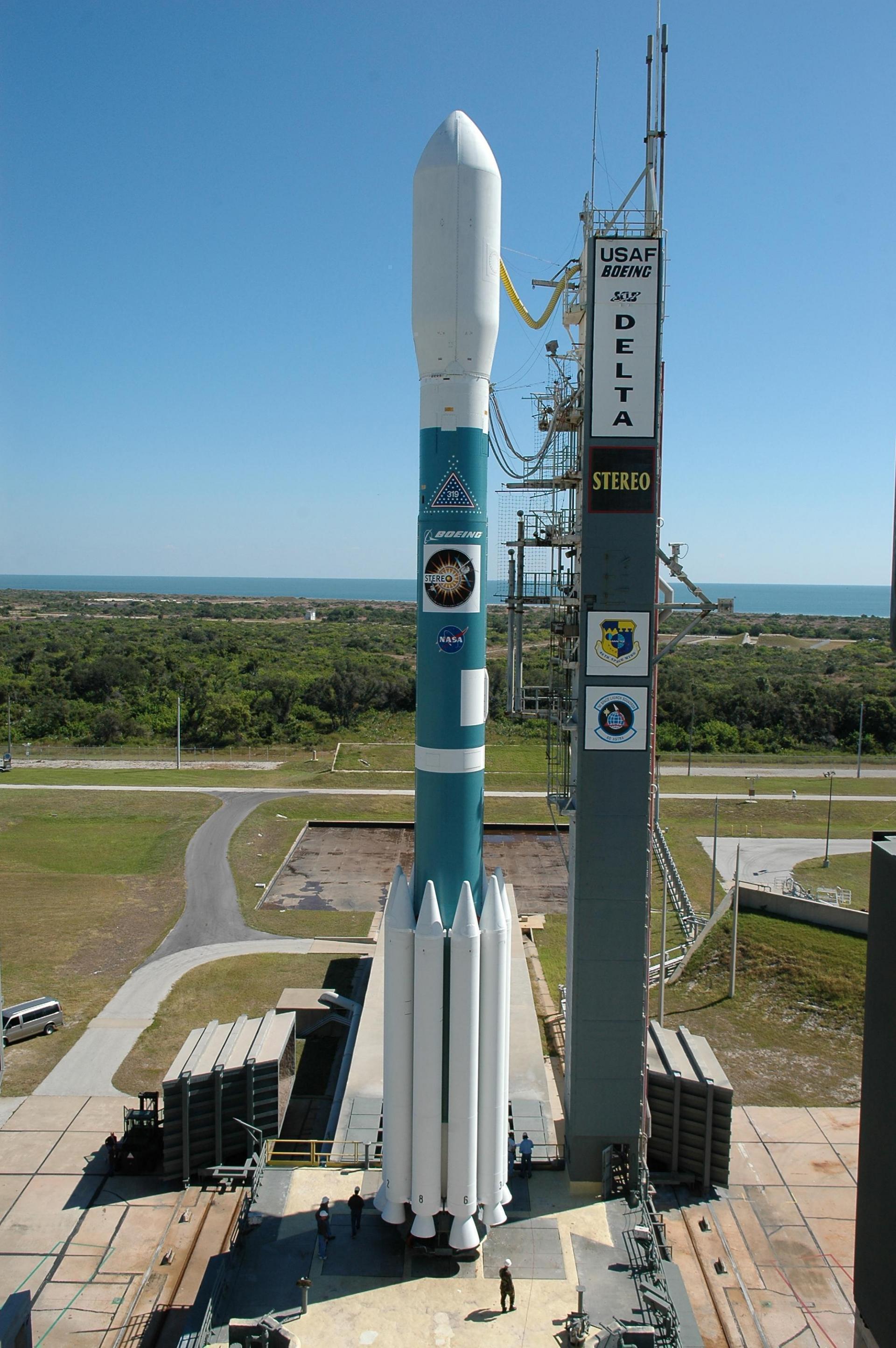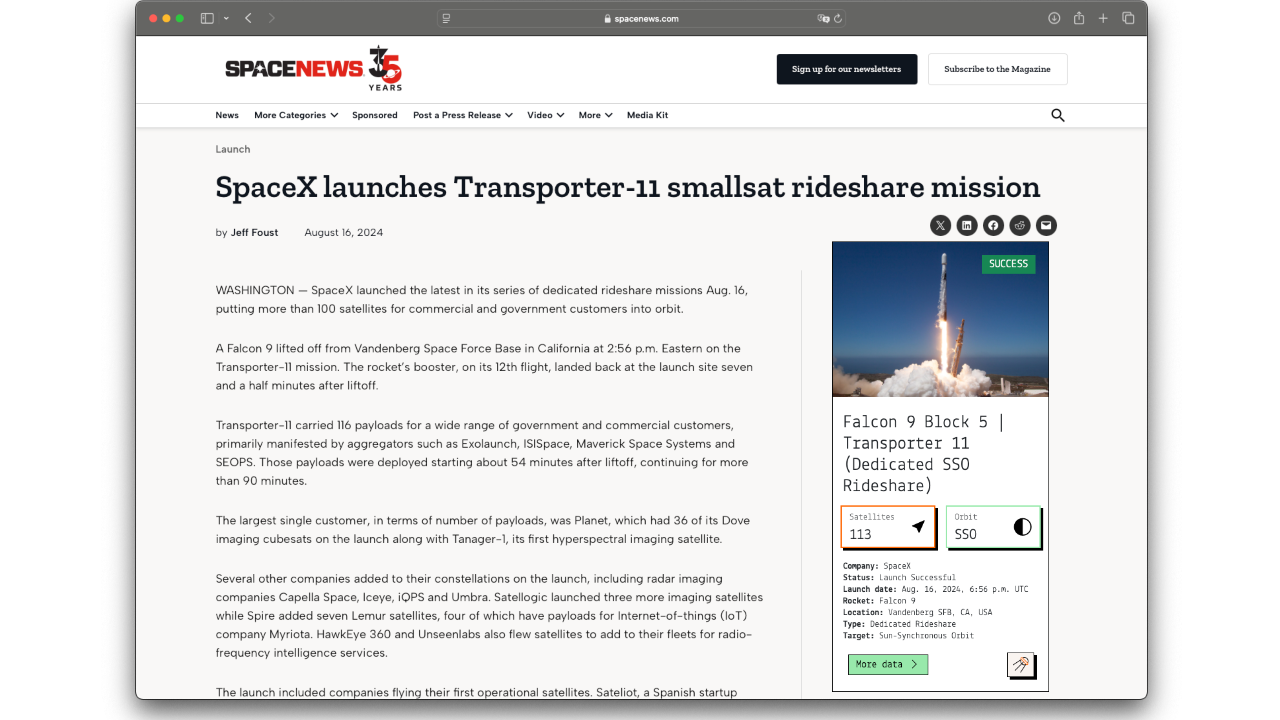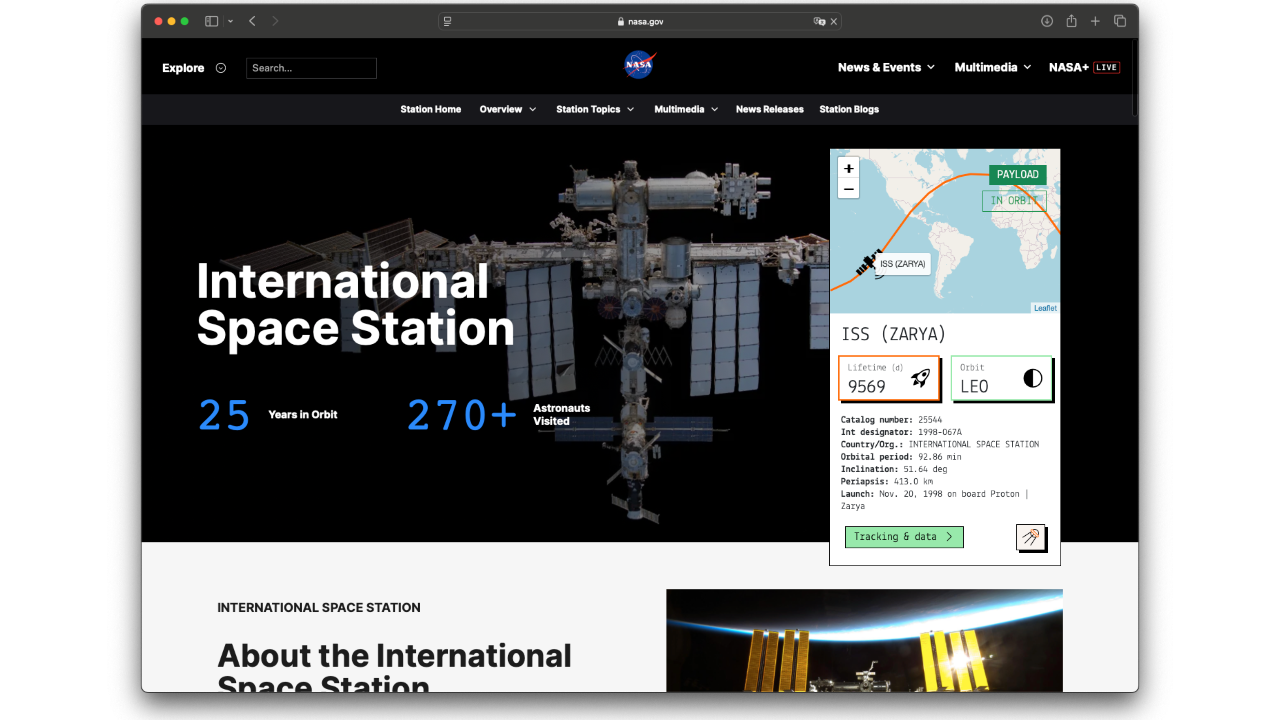Key statistics
Satellite KEPLER at a glance.
Uptime
6032
Days in orbit
Revolutions
N/A
Per day
Orbit
Helio-N/A
None
Inclination
N/A
Latest
Satellite identification and parameters
Extended collection of information and parameters for KEPLER.
Object identification
Object name: KEPLER
International designator: 2009-011A
Object number (NORAD): 34380
Object ID (CCSDS): 34380
Country: UNITED STATES OF AMERICA (US)
Current information (Y/N): Y
Notes: HELIOCENTRIC ORBIT (SUN)
Orbital parameters
Inclination: None deg
Period: None minutes
Apoapsis: None km
Periapsis: None km
Two-line elements (TLE)
TLE not available at the moment. Check back as we update our database every day.
Live tracking on map
Live tracking is not available at the moment. Either this satellite is not in an Earth-centered orbit, or we haven't yet computed its ground track. Check back as we update our database every day.
In-orbit conjunctions
There are no conjunctions computed for KEPLER, at the moment. Check back to stay up to date, as we update our databases every day.
Go to all conjunctionsAssociated space launch
A space observatory to discover Earth-size planets orbiting other stars.
KEPLER was lifted into orbit during the mission ‘Delta II 7925-10L | Kepler’, on board a Delta II space rocket.
The launch took place on March 7, 2009, 3:49 a.m. from Space Launch Complex 17B.
For more information about the launch, click the button.

Delta II 7925-10L | Kepler
Agency: N/A
Status: Launch Successful
Launch date: March 7, 2009, 3:49 a.m. UTC
Rocket: Delta II
Launch pad: Space Launch Complex 17B
Location: Cape Canaveral SFS, FL, USA
...
Latest news about this satellite

Astronomers Map Stellar ‘Polka Dots’ Using NASA’s TESS, Kepler
Scientists have devised a new method for mapping the spottiness of distant stars by using observations from NASA missions of orbiting planets crossing their stars’ faces. The model builds on a technique researchers have used for decades to study star spot...

Data from Kepler reveals reason behind shrinking exoplanets
Located throughout the universe, there are billions — possibly even trillions — of exoplanets orbiting around stars of varying shapes, sizes, colors, and more. Like the stars they orbit, exoplanets also come in many different shapes, sizes, and colors, wi...
Newsletter sign-up
Weekly statistics, charts and insights to help you stay on top of the space industry.




